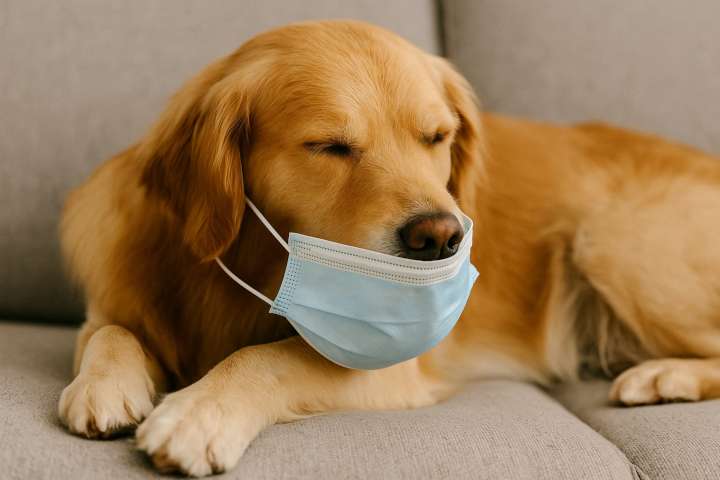Can dogs get the flu? The short answer is yes—and it’s more common than many pet owners realize. Just like humans, dogs can catch the flu. Known as canine influenza, this respiratory illness spreads quickly among dogs, especially in places like dog parks, grooming salons, shelters, and kennels.
But how serious is it? And what can you do to protect your pup?
In this guide, we’ll cover the symptoms of dog flu, how it spreads, what treatment involves, and the best ways to prevent infection.
What Is Canine Influenza?
Canine influenza is a highly contagious respiratory virus caused by two main strains:
- H3N8 – Originally from horses, first identified in U.S. dogs in 2004
- H3N2 – More recent and widespread, originally from birds
Both strains cause similar symptoms and can affect dogs of all breeds and ages.
Symptoms of Dog Flu
Most dogs show mild to moderate symptoms, but some can develop serious complications like pneumonia.
Common signs include:
- Coughing (dry or wet)
- Sneezing
- Runny nose or nasal discharge
- Fever (over 103°F or 39.4°C)
- Lethargy
- Loss of appetite
- Watery eyes
- Difficulty breathing (in severe cases)
Symptoms usually appear 2–4 days after exposure and can last 1–3 weeks.
When to See the Vet
Call your vet if your dog:
- Has a persistent cough or fever
- Shows labored breathing or wheezing
- Stops eating or drinking
- Has yellow or green nasal discharge
- Is a puppy, senior, or immunocompromised dog
The vet may recommend:
- Blood tests or nasal swabs to confirm the virus
- Fluids, rest, and medications to prevent secondary infections
- In severe cases, hospitalization with oxygen therapy
How Is Dog Flu Spread?
Canine flu spreads through:
- Direct contact (sniffing, licking, coughing on each other)
- Airborne droplets (from sneezes or barks)
- Contaminated surfaces (bowls, toys, hands, clothing)
The virus can survive on surfaces for up to 48 hours and is extremely contagious among unvaccinated dogs.
Dogs are most contagious before symptoms appear—making prevention crucial.
How to Prevent Dog Flu
- Vaccinate
There are vaccines available for both H3N8 and H3N2 strains. Talk to your vet if your dog:
- Goes to dog daycare or parks
- Is boarded or groomed regularly
- Lives in a high-risk area or with other dogs
Note: The vaccine doesn’t guarantee immunity but can reduce symptom severity and transmission.
- Avoid High-Risk Environments During Outbreaks
If there’s a flu outbreak in your area:
- Limit visits to dog parks or group settings
- Postpone grooming or boarding
- Ask local facilities about their cleaning and vaccination policies
- Practice Good Hygiene
- Wash hands after handling other dogs
- Disinfect shared surfaces and bowls
- Don’t let your dog share toys or water with unfamiliar dogs
- Quarantine Sick Dogs
If your dog is showing symptoms:
- Keep them isolated for at least 10–14 days
- Disinfect their bedding, toys, and food areas
- Inform any daycare, groomer, or boarding facility they’ve been in contact with
Can Dogs Catch the Human Flu (or Vice Versa)?
No. Canine influenza is not transmissible to humans, and human influenza doesn’t infect dogs. However, dogs can carry bacteria or viruses that humans may be sensitive to—so always wash hands after handling a sick pet.
Conclusion
Final Thoughts on Can Dogs Get the Flu
Yes, dogs can get the flu—and while it’s often mild, it can be serious in some cases. Knowing the symptoms, acting quickly, and taking simple precautions (like vaccination and hygiene) can go a long way in protecting your dog and others.
Want a printable Canine Flu Prevention Checklist? Visit our Dog Health & Safety Center for resources and outbreak alerts.

